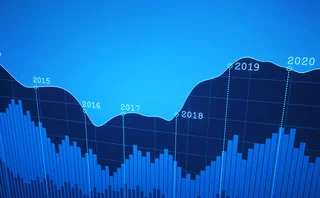
China makes currency change
After months of increasingly fervent speculation on the future of the renminbi, the Chinese government yesterday shifted away from the currency’s peg to the US dollar.
The value of the renminbi will be set each night after the close of trading and this will be used as a centre point for trading in a band of plus and minus 0.3% the next day, according to the PBOC.
“This is a positive move giving the authorities greater control of the economy and monetary policy,” said Mike Hanbury-Williams, head of Pacific equities at F&C Asset Management in London. “It shows China’s commitment to the steady opening of the capital account.”
The move was also generally welcomed by the US politicians, although some said it would need to be the precursor of more substantial currency regime change. “It’s the start of an awfully important process,” said John Snow, US treasury secretary. “The mechanism provides ample room for flexibility over time.”
Pressure from the US has reached boiling point over the last few months, with politicians arguing that China’s currency regime gives it an unfair advantage in global markets. They claimed the renminbi was significantly undervalued making Chinese exports relatively cheap, hurting domestic manufacturing industries.
Indeed, some market participants noted that the new regime could lead to further appreciation of the renminbi against the US dollar over a relatively short period of time. Frank Gong, JP Morgan’s chief China economist, said that the PBOC’s language implied “a more flexible system than a basket peg, which would give more room for the currency to appreciate in the days, weeks and months down the road”.
Gong added that, because the centre of the trading band was flexible, gradual appreciation of the renminbi against the US dollar was likely. “We are looking for a total 7% appreciation in the Chinese renminbi versus the US dollar by the end of the year, and 15% by the end of next year,” he said.
However, there was uncertainty over the precise structure of the currency basket. JP Morgan said it would probably consist of five or six major currencies, including the Australian dollar, euro, Japanese yen, sterling and the US dollar.
Meanwhile, Malaysia also changed its currency peg in the wake of the Chinese alteration. The country’s central bank, Bank Negara Malaysia, said the country would also adopt a managed float referencing the ringgit to an unspecified basket of currencies.
“Changes in the international and regional financial and economic environment have made it important for Malaysia to have a stable exchange rate against its major trading partners,” the central bank said in a statement on its website. “Such stability can best be achieved by maintaining the value of the ringgit against a trade-weighted index of Malaysia’s major trading partners.”
In the July edition of Asia Risk, a sister publication of Risk News, journalists spoke to a number of economists to get their take on the future of Asia’s currency pegs. Analysts from banks including ING and Standard Chartered accurately predicted the timing for these initial changes in China and Malaysia.
Only users who have a paid subscription or are part of a corporate subscription are able to print or copy content.
To access these options, along with all other subscription benefits, please contact info@risk.net or view our subscription options here: http://subscriptions.risk.net/subscribe
You are currently unable to print this content. Please contact info@risk.net to find out more.
You are currently unable to copy this content. Please contact info@risk.net to find out more.
Copyright Infopro Digital Limited. All rights reserved.
As outlined in our terms and conditions, https://www.infopro-digital.com/terms-and-conditions/subscriptions/ (point 2.4), printing is limited to a single copy.
If you would like to purchase additional rights please email info@risk.net
Copyright Infopro Digital Limited. All rights reserved.
You may share this content using our article tools. As outlined in our terms and conditions, https://www.infopro-digital.com/terms-and-conditions/subscriptions/ (clause 2.4), an Authorised User may only make one copy of the materials for their own personal use. You must also comply with the restrictions in clause 2.5.
If you would like to purchase additional rights please email info@risk.net
More on Economics
Global investment outlook: 2026 and beyond
Broadening, steepening and weakening: Franklin Templeton’s top investment ideas for 2026 and beyond
Webinar – Nowcasting the US economy
Join CME Group Chief Economist, Blu Putnam, as he shares insights using alternative data and nowcasting to monitor developments in the US economy.
Fed Funds Futures in a Post-ZIRP World
As the FOMC returns to more active management of its key target rate, Federal Funds futures have experienced dramatic growth.
Challenging economic pessimism: an optimistic note
A contrarian, upbeat view of the long-term economic outlook
Economists, like hedge fund traders, need open minds
Economists, risk managers and traders must learn the lessons of crisis, says Kaminski
Fed wrong not to start QE tapering, says UBS economist
The surprise decision by the Federal Reserve last month not to scale back its quantitative easing programme will create more volatility, says economist







